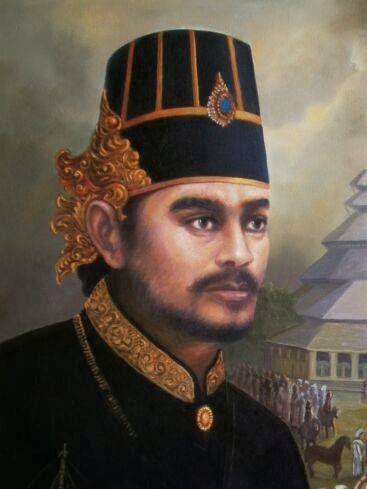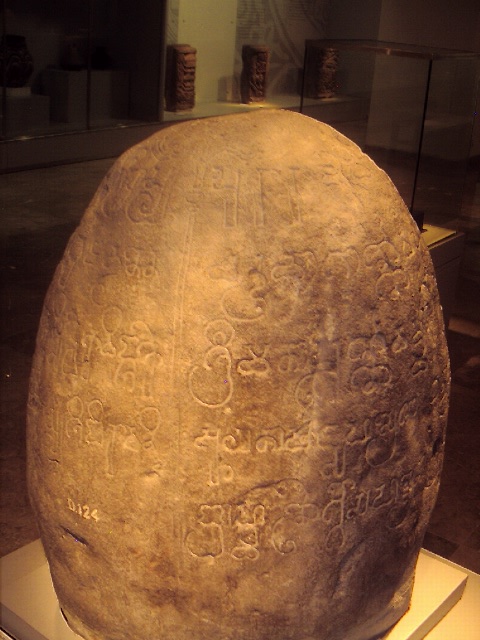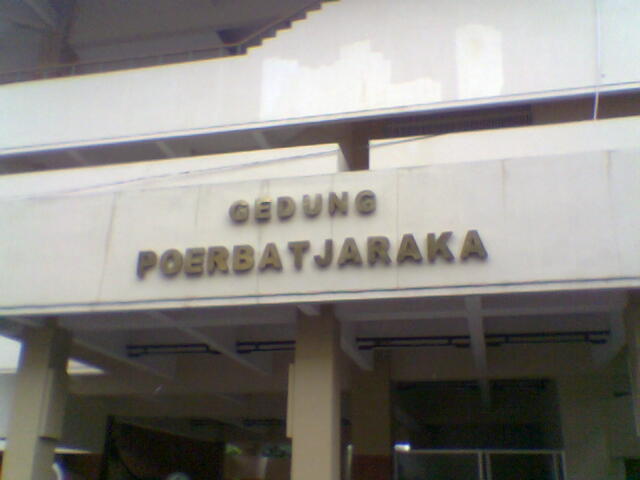|
Cidanghiang Inscription
Cidanghiang inscription, also called Lebak inscription, is an inscription from the Tarumanagara kingdom, estimated to be from the 4th century CE. The inscription was found in 1947 on the bank of Cidanghiang River in Lebak village, Munjul district, in Pandeglang Regency, Banten, Indonesia. The inscription is written in the Pallava script and composed in the Sanskrit language. Text This inscription mentions a king named Purnawarman, who used the title ''vikrānta'', which indicates that he was a worshiper of Lord Vishnu. It consists only of two lines, transliterated as follows: : : Translation The translation of this inscription according to philologist Poerbatjaraka (1952) is as follows: : ''This is the conqueror of the three worlds (with his three steps),'' : ''his majesty King Pūrnavarman, the great king, the hero (and) to be the banner of all kings in the worlds'' See also * Purnawarman * Tarumanagara Tarumanagara or Taruma Kingdom or just Taruma is an early ... [...More Info...] [...Related Items...] OR: [Wikipedia] [Google] [Baidu] |
Tarumanagara
Tarumanagara or Taruma Kingdom or just Taruma is an early Sundanese Indianised kingdom, located in western Java, whose 5th-century ruler, Purnawarman, produced the earliest known inscriptions in Java, which are estimated to date from around 450 CE. At least seven stone inscriptions connected to this kingdom were discovered in Western Java area, near Bogor and Jakarta. They are Ciaruteun, Kebon Kopi, Jambu, Pasir Awi, and Muara Cianten inscriptions near Bogor; Tugu inscription near Cilincing in North Jakarta; and Cidanghiang inscription in Lebak village, Munjul district, south of Banten. Location The inscriptions of Taruma kingdom are the earliest records of Hinduism in the western part of the archipelago. The geographical position of coastal West Java, which corresponds to today modern Jakarta, is a commanding region that controls the Sunda Strait. This location is strategic in regard to Sumatra, and also its connection to Asian continent of India and China. The kingdom ... [...More Info...] [...Related Items...] OR: [Wikipedia] [Google] [Baidu] |
Pandeglang Regency
Pandeglang Regency (Sundanese script, Sundanese: ) is a Regency (Indonesia), regency of Banten province, Indonesia. It is mainly located on the west and south coasts of the island of Java, and is the most westerly regency on Java Island, but it also includes a number of offshore islands such as Panaitan, Deli Island, Deli and Tinjil. The regency has an area of 2,746.81 km2, and an population at the 2010 Census of 1,149,610, rising to 1,272,687 at the 2020 Census; the official estimate as at mid 2021 was 1,288,314. The regency seat is the town of Pandeglang. Administrative districts The Regency is divided into 35 Districts of Indonesia, districts (''kecamatan''), tabulated below with their areas and their populations at the 2010 Census and the 2020 Census, together with the official estimates as at mid 2021. The table also includes the number of administrative villages (rural ''desa'' and urban ''kelurahan'') in each district, and its postal codes. Notes: (a) including 32 ... [...More Info...] [...Related Items...] OR: [Wikipedia] [Google] [Baidu] |
Banten
Banten ( id, Banten; Sundanese: , romanized ''Banten'') is the westernmost province on the island of Java, Indonesia. Its capital city is Serang. The province borders West Java and the Special Capital Region of Jakarta on the east, the Java Sea on the north, the Indian Ocean on the south, and the Sunda Strait (which separates Java from the neighbouring island of Sumatra) on the west. The province covers an area of . It had a population of over 11.9 million in the 2020 census, up from about 10.6 million in 2010.Badan Pusat Statistik, Jakarta, 2021. The estimated mid-2021 population was 12.06 million.Badan Pusat Statistik, Jakarta, 2022. Formerly part of the province of West Java, Banten was declared a separate province in 2000. The region is the homeland of the Bantenese people, whose culture differs slightly from that of West Java's Sundanese people. The northern half (particularly the areas near Jakarta and the Java Sea coast) has recently experienced rapid rises in populatio ... [...More Info...] [...Related Items...] OR: [Wikipedia] [Google] [Baidu] |
Indonesia
Indonesia, officially the Republic of Indonesia, is a country in Southeast Asia and Oceania between the Indian and Pacific oceans. It consists of over 17,000 islands, including Sumatra, Java, Sulawesi, and parts of Borneo and New Guinea. Indonesia is the world's largest archipelagic state and the 14th-largest country by area, at . With over 275 million people, Indonesia is the world's fourth-most populous country and the most populous Muslim-majority country. Java, the world's most populous island, is home to more than half of the country's population. Indonesia is a presidential republic with an elected legislature. It has 38 provinces, of which nine have special status. The country's capital, Jakarta, is the world's second-most populous urban area. Indonesia shares land borders with Papua New Guinea, East Timor, and the eastern part of Malaysia, as well as maritime borders with Singapore, Vietnam, Thailand, the Philippines, Australia, Palau, and India ... [...More Info...] [...Related Items...] OR: [Wikipedia] [Google] [Baidu] |
Pallava Script
The Pallava script or Pallava Grantha, is a Brahmic scripts, Brahmic script, named after the Pallava dynasty of South India, attested since the 4th century AD. As epigrapher Arlo Griffiths makes clear, however, the term is misleading as not all of the relevant scripts referred to have a connection with the Pallava dynasty. He instead advocates that these scripts be called 'late Southern Brāhmī' scripts. In India, Pallava script evolved into the Tamil script, Tamil and Grantha script. Pallava Indianization of Southeast Asia, spread to Southeast Asia and evolved into local scripts such as Balinese script, Balinese, Baybayin, Javanese script, Javanese, Kawi alphabet, Kawi, Khmer alphabet, Khmer, Tai Tham alphabet, Lanna, Lao alphabet, Lao, Mon–Burmese script, Mon–Burmese, New Tai Lue alphabet, Sundanese script, Sundanese, and the Thai alphabet, Thai A proposal to encode the script in Unicode was submitted in 2018. History During the rule of Pallavas, the script accompanied pri ... [...More Info...] [...Related Items...] OR: [Wikipedia] [Google] [Baidu] |
Sanskrit Language
Sanskrit (; attributively , ; nominally , , ) is a classical language belonging to the Indo-Aryan branch of the Indo-European languages. It arose in South Asia after its predecessor languages had diffused there from the northwest in the late Bronze Age. Sanskrit is the sacred language of Hinduism, the language of classical Hindu philosophy, and of historical texts of Buddhism and Jainism. It was a link language in ancient and medieval South Asia, and upon transmission of Hindu and Buddhist culture to Southeast Asia, East Asia and Central Asia in the early medieval era, it became a language of religion and high culture, and of the political elites in some of these regions. As a result, Sanskrit had a lasting impact on the languages of South Asia, Southeast Asia and East Asia, especially in their formal and learned vocabularies. Sanskrit generally connotes several Old Indo-Aryan language varieties. The most archaic of these is the Vedic Sanskrit found in the Rig Veda, a col ... [...More Info...] [...Related Items...] OR: [Wikipedia] [Google] [Baidu] |
Purnawarman
Purnawarman or Purnavarman is the 5th-century king of Tarumanagara, a Hindu Indianized kingdom, located in modern-day West Java, Jakarta and Banten provinces, Indonesia. Purnawarman reigned during the 5th century, and during his reign he created several stone inscriptions. According to these inscriptions he embarked on hydraulic project and also identified himself to Vishnu, which indicates him and his kingdom were adhering Vishnuite faith. King Purnawarman established a new capital city for the kingdom, located somewhere near present-day Tugu (North Jakarta) or Bekasi. His name in Sanskrit means "perfect shield" or "complete protector". Later series of Tarumanagaran kings are only known from their names, all bears the name ''warman'' (Sanskrit: ''varman'' means "shield" or "protector") which suggests that all of them belongs in the same dynasty. Historiography Purnawarman is the most well known ruler among Tarumanagaran kings, mostly because he extensively created numbers of ... [...More Info...] [...Related Items...] OR: [Wikipedia] [Google] [Baidu] |
Vishnu
Vishnu ( ; , ), also known as Narayana and Hari, is one of the principal deities of Hinduism. He is the supreme being within Vaishnavism, one of the major traditions within contemporary Hinduism. Vishnu is known as "The Preserver" within the Trimurti, the triple deity of supreme divinity that includes Brahma and Shiva.Gavin Flood, An Introduction to Hinduism' (1996), p. 17. In Vaishnavism, Vishnu is the supreme being who creates, protects, and transforms the universe. In the Shaktism tradition, the Goddess, or Adi Shakti, is described as the supreme Para Brahman, yet Vishnu is revered along with Shiva and Brahma. Tridevi is stated to be the energy and creative power (Shakti) of each, with Lakshmi being the equal complementary partner of Vishnu. He is one of the five equivalent deities in Panchayatana puja of the Smarta tradition of Hinduism. According to Vaishnavism, the highest form of Ishvara is with qualities (Saguna), and have certain form, but is limitless, transcend ... [...More Info...] [...Related Items...] OR: [Wikipedia] [Google] [Baidu] |
Poerbatjaraka
Poerbatjaraka (alternative spelling: Purbacaraka, 1 January 1884 – 25 July 1964) was a Javanese/Indonesian self-taught philologist and professor, specialising in Javanese literature. The eldest son of a Surakarta royal courtier in the Dutch East Indies, he showed interest in Javanese literature at an early age, reading from books in the court's collection. Despite attending only primary school, his knowledge of Dutch and Javanese literature allowed him to take a position at the colony's Archaeology Service, and then at Leiden University in the Netherlands. He was allowed to obtain a doctor's degree at Leiden. He then returned to the colony to work at a Batavia (today Jakarta) museum, cataloguing Javanese texts and writing scholarly works. After Indonesia's independence, he became a professor at the universities of Indonesia, Gajah Mada, and Udayana. Names and titles It was common for a Javanese gentleman of Poerbatjaraka's time to change names and be given new titles throughou ... [...More Info...] [...Related Items...] OR: [Wikipedia] [Google] [Baidu] |
Sanskrit Inscriptions In Indonesia
A good number of inscriptions written in Sanskrit language have been found in Malaysia and Indonesia (in Indonesian known as ''Prasasti''). "Early inscriptions written in Indian languages and scripts abound in Southeast Asia. ..The fact that southern Indian languages didn't travel eastwards along with the script further suggests that the main carriers of ideas from the southeast coast of India to the east - and the main users in Southeast Asia of religious texts written in Sanskrit and Pali - were Southeast Asians themselves. The spread of these north Indian sacred languages thus provides no specific evidence for any movements of South Asian individuals or groups to Southeast Asia. Notable inscriptions Kutai inscriptions The oldest known inscriptions in Indonesia are the Kutai inscriptions, or the Muarakaman inscriptions, which are those on seven stone pillars, or '' yupa'' (“sacrificial posts”), found in the eastern part of Borneo, in the area of Kutai, East Kalimanta ... [...More Info...] [...Related Items...] OR: [Wikipedia] [Google] [Baidu] |
Tarumanagara
Tarumanagara or Taruma Kingdom or just Taruma is an early Sundanese Indianised kingdom, located in western Java, whose 5th-century ruler, Purnawarman, produced the earliest known inscriptions in Java, which are estimated to date from around 450 CE. At least seven stone inscriptions connected to this kingdom were discovered in Western Java area, near Bogor and Jakarta. They are Ciaruteun, Kebon Kopi, Jambu, Pasir Awi, and Muara Cianten inscriptions near Bogor; Tugu inscription near Cilincing in North Jakarta; and Cidanghiang inscription in Lebak village, Munjul district, south of Banten. Location The inscriptions of Taruma kingdom are the earliest records of Hinduism in the western part of the archipelago. The geographical position of coastal West Java, which corresponds to today modern Jakarta, is a commanding region that controls the Sunda Strait. This location is strategic in regard to Sumatra, and also its connection to Asian continent of India and China. The kingdom ... [...More Info...] [...Related Items...] OR: [Wikipedia] [Google] [Baidu] |






.jpg)